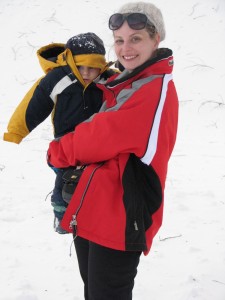So, I feel a little silly writing about frostbite from tropical Cairns, even if it has been a relatively chilly winter day here in Queensland. A snow vacation is hopefully on the cards for us in the next 12 months, and I know many of my friends and family will be enjoying snow holidays this winter so I thought this information may be useful.
Frostbite
Frostbite is either temporary or permanent damage to the tissue caused by prolonged exposure to temperatures below freezing. It is caused by restriction of blood flow in frostbitten skin. If severe it can lead to gangrene and infection. Small children, particularly infants are at added risk of frostbite as they lose heat from their skin more rapidly than adults. Children used to warmer climates may be at excess risk.
The symptoms of frostbite most commonly occur on the face, nose, ears, hands or feet. Skin is initially reddened then becomes white, hard and swollen. In severe cases blisters or ulcers may occur. Initially frostbitten skin will feel tingly or numb. If it is allowed to progress it becomes painful.
Prevention
- Dress your child warmly in multiple layers. These may include: thermal underwear, skivvies, jumpers, water-proof clothing, hats, gloves and boots. Cover extremities!
- Keep your child dry. If they become wet bring them inside to warm and change them.
- Bring your child inside to warm up intermittently. Tempt them inside with warm beverages such as soup or hot chocolate.
- Limit the time outside according to weather conditions. Frostbite is more common the colder, wetter and windier it is.
- Heed cold or frostbite warnings that may be issued in some locations such as North America.
What to do if frostbite occurs
Always take your child to see a doctor immediately if frostbite occurs. The following are important first aid measures you should also be aware of:
- Bring the child inside; remove wet clothing, substituting for warm dry clothes.
- Wrap your child in a blanket
- Give them something warm to drink.
- Warm the affected area by soaking in warm (not hot) water.
- No rubbing or massage of the skin please.
- Leave blisters in place.




Oh gosh I havent even thought of Frost Bite before! We (hubby and I) have been to the snow when we were younger. We went with our schools and had a ball.
Yet even then I didnt think about it.
Now that we are going to be heading that way for the Snow Season with our boys I will have to remember your handy tips. I never even thought about how cold they could get – will have to start thinking about what clothes we are going to need 🙂
Hi Lisa,
Truthfully, in Australia hypothermia is more of a risk. I have seen kids dangerously underdressed on the Australian snowfields though so thought it was worth a mention. My difficulty is getting little boys who live in shorts and tee-shirts all year round to wear “real” shoes when we head down south, let alone put up with hats and gloves!
Pingback: Hidden travel costs. Budgeting for family travel | Bubs on the Move